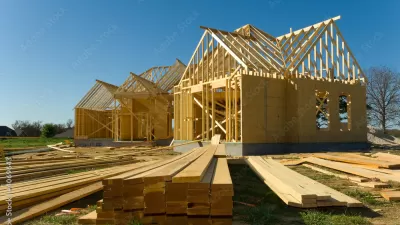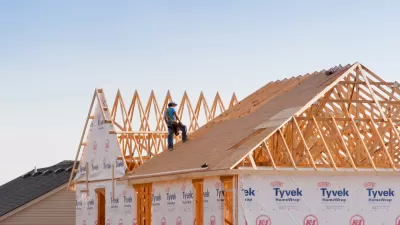The construction industry is licking its chops as plans for Sandy’s recovery take shape. After years of idleness due to the housing bust, builders and contractors find themselves ready to roll up their sleeves, and in need of a new workforce.
"I always look forward to a natural disaster," said Doug Palmieri, owner of Palmieri Construction in Middlefield, Conn. "The last two storms we had around here, the snow we had included, helped out the contracting business quite a bit."
Mr. Palmieri's assessment may sound crass, but for those in the construction industry, the damage incurred by Hurricane Sandy is a much-welcomed business opportunity. Construction companies along the East Coast are already inundated with calls, but are also concerned "about finding enough workers quickly," report Catherine Rampell and Shaila Dewan.
"Over the course of the recession, 60 to 75 percent of construction workers left the area because there was no work to keep them busy," said Pat Broom, owner of Phoenix Restoration, a 15-year-old company in Kill Devil Hills, N.C., on the Outer Banks.
Various factors, however, will slow reconstruction efforts. These include waiting for areas to dry out, for insurance companies to come through, and for out-of-state owners to be able to take action to restore their properties.
As the industry prepares for long-term recovery, experts consider the economic implications. Peter Morici, an economics professor a the Smith School of Business at the University of Maryland estimates, "that the economic losses from Sandy would be $35 billion to $45 billion, but that economic benefits from reconstruction and its ripple effects would total about $27 billion to $36 billion, not including gains of about $10 billion ‘from a more modern and productive capital stock.'"
FULL STORY: For Builders, the Storm Is Good for Business

Maui's Vacation Rental Debate Turns Ugly
Verbal attacks, misinformation campaigns and fistfights plague a high-stakes debate to convert thousands of vacation rentals into long-term housing.

Planetizen Federal Action Tracker
A weekly monitor of how Trump’s orders and actions are impacting planners and planning in America.

San Francisco Suspends Traffic Calming Amidst Record Deaths
Citing “a challenging fiscal landscape,” the city will cease the program on the heels of 42 traffic deaths, including 24 pedestrians.

Defunct Pittsburgh Power Plant to Become Residential Tower
A decommissioned steam heat plant will be redeveloped into almost 100 affordable housing units.

Trump Prompts Restructuring of Transportation Research Board in “Unprecedented Overreach”
The TRB has eliminated more than half of its committees including those focused on climate, equity, and cities.

Amtrak Rolls Out New Orleans to Alabama “Mardi Gras” Train
The new service will operate morning and evening departures between Mobile and New Orleans.
Urban Design for Planners 1: Software Tools
This six-course series explores essential urban design concepts using open source software and equips planners with the tools they need to participate fully in the urban design process.
Planning for Universal Design
Learn the tools for implementing Universal Design in planning regulations.
Heyer Gruel & Associates PA
JM Goldson LLC
Custer County Colorado
City of Camden Redevelopment Agency
City of Astoria
Transportation Research & Education Center (TREC) at Portland State University
Jefferson Parish Government
Camden Redevelopment Agency
City of Claremont





























